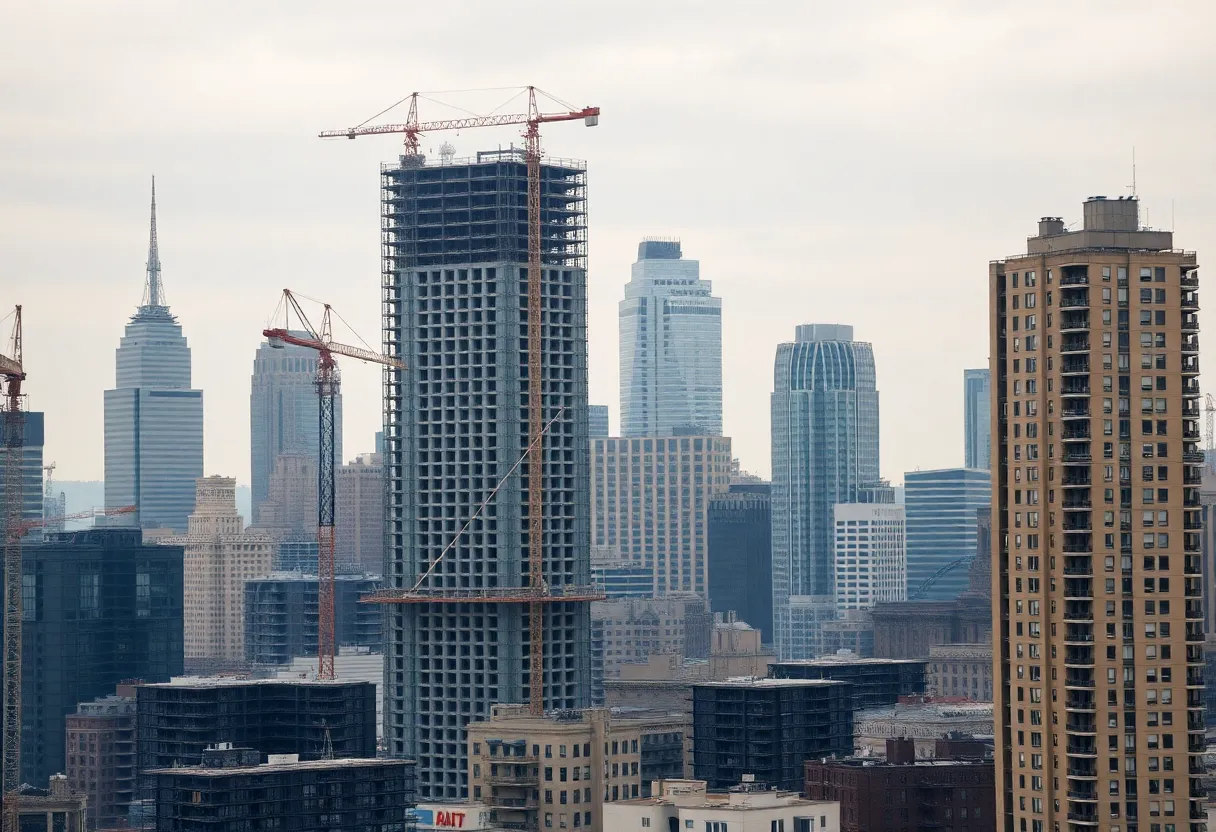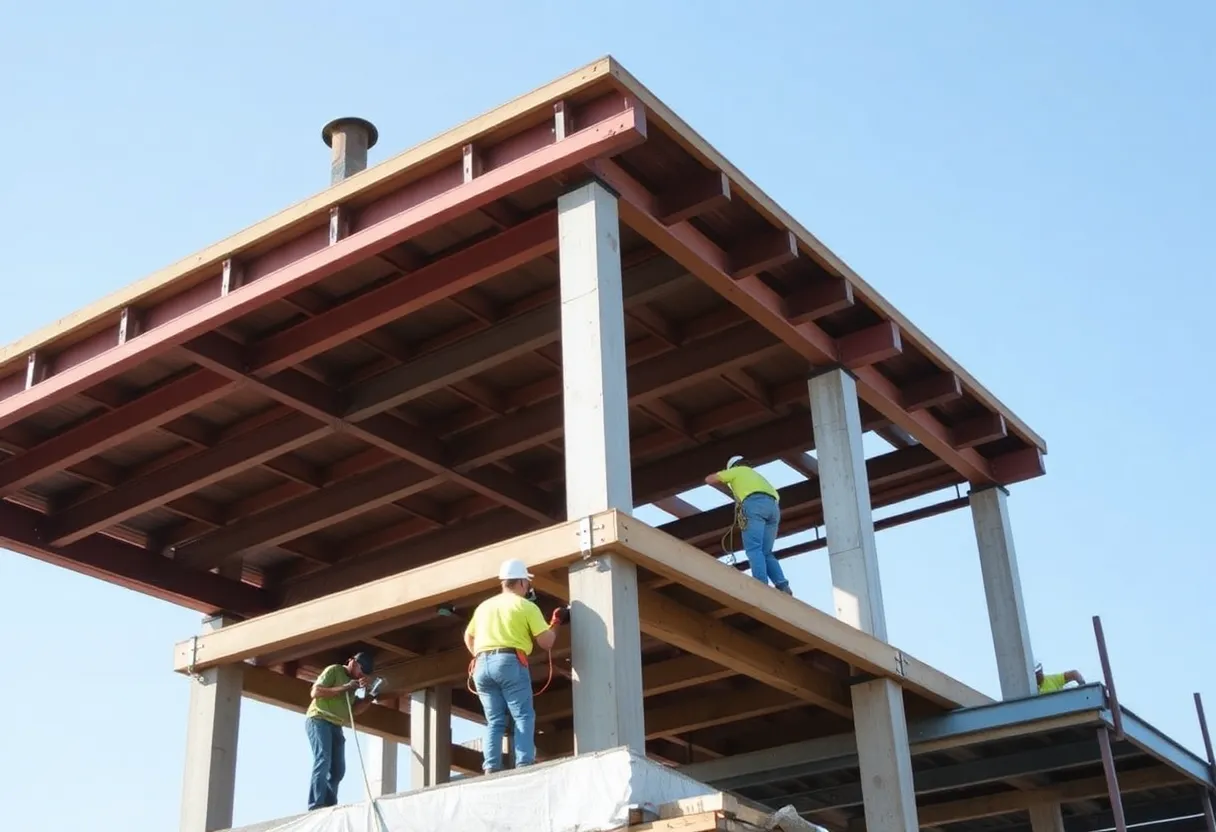New York City, October 6, 2025
News Summary
New York City has seen a sharp decline in new market-rate apartment construction, with quarterly housing starts falling from 7,500 to 2,500 units — a 67% decrease. Units under construction dropped from 71,000 to 47,000, driven by the replacement of the 421a tax abatement with the stricter 485x program, higher land and union labor costs, and tighter wage rules. Developers are leaning into conversions (8,310 units in the pipeline) and renovating existing buildings. Rent growth remains 2.7%, while construction wages and input prices have risen, adding pressure on new ground-up projects.
New York City housing starts plunge 67% as tax abatement swap and rising costs stall new building
New York City has seen a sharp fall in new apartment construction this year, a drop driven by a major change in tax incentives, high building costs, and a tighter labor market. Housing construction starts for market-rate apartments dropped from an average of 7,500 units per quarter (2021–2024) to just 2,500 units per quarter this year. The drop from 7,500 to 2,500 units per quarter represents a 67 percent decrease in housing construction starts. CoStar provided the data showing the drop in housing construction starts.
What the numbers show now
The total amount of apartment construction underway has also fallen. The total number of apartment units under construction in NYC fell from 71,000 to 47,000 in the referenced period, according to CoStar. That retreat in new supply comes as rent growth continues to outpace the nation: NYC rent growth is 2.7 percent this year. Meanwhile, Apartment inventory in NYC grew by only 6 percent from 2020 to 2024, per CoStar, far below the growth seen in many Sun Belt and Sun Belt-adjacent markets.
Policy shift: 485x replaces 421a
The 485x real estate tax abatement program replaced the expired 421a program last year. Both programs were designed to cut property tax bills and motivate developers to add housing with affordability rules attached. In practice, however, the newer program layers in tighter affordability targets and wage rules that many developers find costly and complex. Many of New York City’s top landlords have criticized the 485x program as imposing unnecessarily high wage requirements and complicating blueprints.
Why developers are pulling back
Builders and investors now face higher land prices, expensive union labor in New York, and a tax incentive that asks for deeper, longer affordability commitments. The math is pushing some projects off the table. Developers are increasingly choosing to buy and update existing apartment buildings or to convert older office towers to housing rather than start expensive ground-up projects. As of February (year implied as current in article), NYC had 8,310 new housing units in the pipeline from conversions.
Conversions and where supply is coming from
Conversions are helping add units faster in some cases, and city rules have been relaxed to make some conversions easier to complete. Investors and owners are prioritizing higher-quality office space for recovery while older, dated office stock becomes prime conversion material. Conversions reduce the need for new land and large construction crews, and they can be a faster route to adding housing in a dense city.
Labor market pressure and contractor moves
At the same time, local construction firms are changing how they pay and support workers. A separate 2025 study from The Bonadio Group reported that New York construction firms are ramping up pay and benefits to stay competitive in a tight labor market. Nancy Cox said wages have increased by 12.4% on average as labor shortages persist in the industry (per the study). Companies are also offering bonuses and expanded benefits: About 79% of companies now offer cash bonuses, including performance-based and referral incentives (per the study). Over 90% of construction firms provide retirement plans, most often through profit-sharing models that link employee and company success.
Those cost pressures show up in price indexes. Overall and nonresidential input prices are now 0.8% higher than a year ago. More broadly, Overall and nonresidential input prices sit more than 40% higher compared to February 2020. Many firms say they are passing higher costs to clients or delaying projects until conditions improve.
Tax credits and tools underused
The study also found low awareness of available federal and state hiring credits among contractors. About 82% of respondents were unaware of available federal and state employment tax credits (study finding). Those credits could help offset some hiring costs for firms that bring on veterans and workers from underrepresented groups.
What industry sources suggest
Analysts suggest several policy options to get construction moving again, including tax breaks that extend longer or into perpetuity when policymakers ask for deeper affordability commitments. Without stronger incentives, the risk is that capital flows to easier markets or that investors buy existing market-rate buildings instead of building new supply.
Bottom line
The city faces a notable shortfall in new housing starts this year, a situation tied to a program rewrite, rising costs, and worker shortages. Conversions and investment in existing buildings are softening the blow, but the pace of new market-rate ground-up construction has slowed dramatically. Policymakers and industry leaders are weighing tradeoffs between demanding more long-term affordability and offering the kind of incentives that make new projects pencil out.
FAQ
How much did housing construction starts drop?
The drop from 7,500 to 2,500 units per quarter represents a 67 percent decrease in housing construction starts.
Who provided the data on the housing start decline?
CoStar provided the data showing the drop in housing construction starts.
How many apartment units are under construction now compared to before?
The total number of apartment units under construction in NYC fell from 71,000 to 47,000 in the referenced period, according to CoStar.
What tax program replaced the old abatement?
The 485x real estate tax abatement program replaced the expired 421a program last year.
Are conversions adding housing supply?
As of February (year implied as current in article), NYC had 8,310 new housing units in the pipeline from conversions.
How are contractors responding to the tight labor market?
A separate 2025 study from The Bonadio Group reported that New York construction firms are ramping up pay and benefits to stay competitive in a tight labor market.
By how much have wages increased in construction?
Nancy Cox said wages have increased by 12.4% on average as labor shortages persist in the industry (per the study).
What percentage of companies offer cash bonuses?
About 79% of companies now offer cash bonuses, including performance-based and referral incentives (per the study).
How common are retirement plans at construction firms?
Over 90% of construction firms provide retirement plans, most often through profit-sharing models that link employee and company success.
Are firms aware of hiring tax credits?
About 82% of respondents were unaware of available federal and state employment tax credits (study finding).
How have input prices changed recently?
Overall and nonresidential input prices are now 0.8% higher than a year ago. Overall and nonresidential input prices sit more than 40% higher compared to February 2020.
How fast is rent growing in NYC?
NYC rent growth is 2.7 percent this year.
How much did apartment inventory grow from 2020 to 2024?
Apartment inventory in NYC grew by only 6 percent from 2020 to 2024, per CoStar.
Key features at a glance
| Feature | Detail |
|---|---|
| Quarterly housing starts (recent 2021–2024 avg vs. this year) | 7,500 → 2,500 units per quarter (67% decrease) |
| Units under construction | 71,000 → 47,000 units |
| Tax abatement change | 485x replaced 421a last year |
| Conversion pipeline | 8,310 new housing units in the pipeline from conversions (as of February) |
| Rent growth (current year) | 2.7 percent |
| Wage inflation in construction | Wages increased by 12.4% on average (per Bonadio Group study) |
| Input price changes | 0.8% higher vs last year; >40% higher vs Feb 2020 |
| Bonuses and retirement plans | About 79% offer cash bonuses; over 90% offer retirement plans |
Deeper Dive: News & Info About This Topic
Additional Resources
- Commercial Observer: NYC apartment construction plummets
- Wikipedia: Housing in New York City
- Crain’s New York: NYC construction jobs still below pre-pandemic levels
- Google Search: NYC construction jobs 2025
- Construction Dive: How New York contractors fight labor shortages
- Google Scholar: construction labor shortages New York 2025
- Law360: NY construction co accused of layoff without proper notice
- Encyclopedia Britannica: layoff
- Long Island Business News: Long Island construction job decline
- Google News: NYC housing starts 485x 421a
Author: Construction FL News
The FLORIDA STAFF WRITER represents the experienced team at constructionflnews.com, your go-to source for actionable local news and information in Florida and beyond. Specializing in "news you can use," we cover essential topics like product reviews for personal and business needs, local business directories, politics, real estate trends, neighborhood insights, and state news affecting the area—with deep expertise drawn from years of dedicated reporting and strong community input, including local press releases and business updates. We deliver top reporting on high-value events such as the Florida Build Expo, major infrastructure projects, and advancements in construction technology showcases. Our coverage extends to key organizations like the Associated Builders and Contractors of Florida and the Florida Home Builders Association, plus leading businesses in construction and legal services that power the local economy such as CMiC Global and Shutts & Bowen LLP. As part of the broader network, including constructioncanews.com, constructionnynews.com, and constructiontxnews.com, we provide comprehensive, credible insights into the dynamic construction landscape across multiple states.





